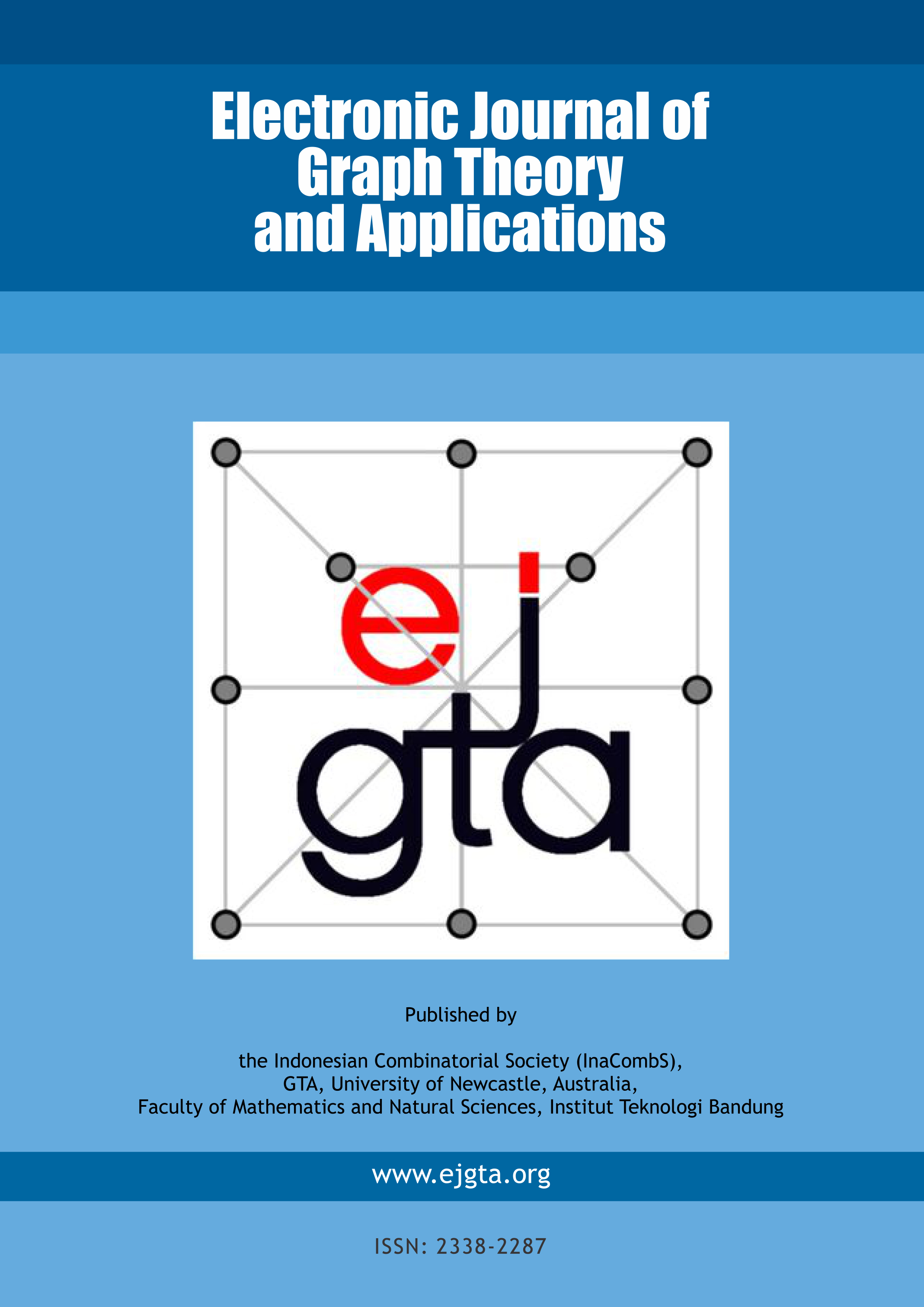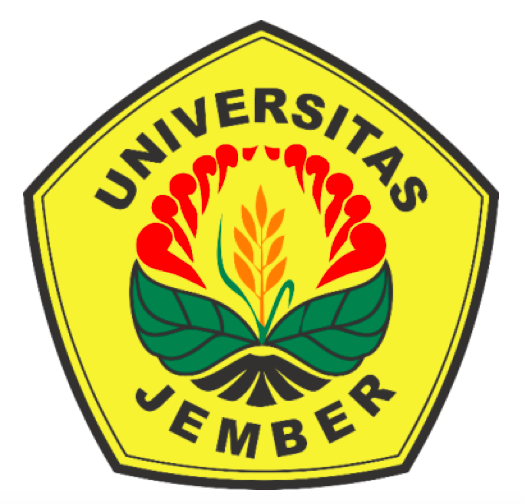Signless normalized Laplacian for hypergraphs
Abstract
Keywords
Full Text:
PDFDOI: http://dx.doi.org/10.5614/ejgta.2022.10.2.11
References
B.D. Acharya and M.K. Gill, On the index of gracefulness of a graph and the gracefulness of two-dimensional square lattice graphs, Indian J. Math. 23 (1981), 81–94.
E. Andreotti, Spectra of hyperstars, Australas. J. Comb. 82 (2022), 74–94.
E. Andreotti, A. Bazzani, S. Rambaldi, N. Guglielmi, and P. Freguglia, Modeling traffic fluctuations and congestion on a road network, Advances in Complex Systems 18 (2015).
E. Andreotti, D. Remondini, G. Servizi, and A. Bazzani, On the multiplicity of Laplacian eigenvalues and Fiedler partitions, Linear Algebra and its Applications 544 (2018), 206–222.
M. Asllani, D.M. Busiello, T. Carletti, D. Fanelli, and G. Planchon, Turing instabilities on cartesian product networks, Scientific Reports 5 (2015).
A. Bodo, G.Y. Katona, and P.L. Simon, SIS epidemic propagation on hypergraphs, Bull. Math. Biol. 78(4) (2016), 713–735.
T.Y. Chang, Domination Numbers of Grid Graphs, PhD thesis, Tampa, FL: University of South Florida, 1992.
F. Chung, Spectral graph theory, American Mathematical Society, (1997).
C. Curto, What can topology tell us about the neural code?, Bull. Amer. Math. Soc. 54 (2017), 63–78.
C. Curto, E. Gross, J. Jeffries, K. Morrison, Z. Rosen M. Omar, A. Shiu, and N. Youngs, What makes a neural code convex?, SIAM J. Appl. Algebra Geom. 1 (2016), 222–238.
C. Curto, V. Itskov, A. Veliz-Cuba, and N. Youngs, The neural ring: an algebraic tool for analyzing the intrinsic structure of neural codes, Bull. Math. Biol. 75(9) (2013), 1571–1611.
M.K. Franke and M. Hoch, Investigating an algebraic signature for max intersection-complete codes, Texas A&M Mathematics REU, 2017.
M.K. Franke and S. Muthiah, Every neural code can be realized by convex sets, Adv. Appl. Math. 99 (2018), 83–93.
L.R. Fuentes, I.J. Dejter, and C.A. Araujo, Rainbow perfect domination in lattice graphs, Electron, J. Graph Theory Appl. 6(1) (2018), 95–112.
C. Giusti and V. Itskov, A no-go theorem for one-layer feedforward networks, Neural Comput. 26 (2014), 2527–2540.
A.A. Gritsenko, M. Hulsman, M.J.T. Reinders, and D. de Ridder, Unbiased quantitative models of protein translation derived from ribosome profiling data, PLoS Computational Biology 11 (2015).
A. Itai, C.H. Papadimitriou, and J.L. Szwarcfiter. Hamilton paths in grid graphs, SIAM J. Comput. 11 (1982), 676–686.
H. Iwashita, Y. Nakazawa, J. Kawahara, T. Uno, and S.I. Minato, Efficient Computation of the Number of Paths in a Grid Graph with Minimal Perfect Hash Functions, TCS Technical Report. No. TCS-TR-A-13-64. Hokkaido University Division of Computer Science., 2013.
J. Jost and R. Mulas, Hypergraph Laplace operators for chemical reaction networks, Advances in Mathematics 351 (2019), 870–896.
C. Lienkaemper, A. Shiu, and Z. Woodstock, Obstructions to convexity in neural codes, Adv. Appl. Math. 85 (2017), 31–59.
K. Mallick, Some exact results for the exclusion process, Journal of Statistical Mechanics: Theory and Experiment, 01 (2011), P01024.
J. Montaldi, Notes on circulant matrices, Manchester Institute for Mathematical Sciences School of Mathematics, (2012).
R. Mulas, Sharp bounds for the largest eigenvalue, Math. notes 109 (2021), 102–109.
R. Mulas, C. Kuehn, and J. Jost, Coupled dynamics on hypergraphs: Master stability of steady states and synchronization, Phys. Rev. E 101 (2020), 062313.
R. Mulas and N.M. Tran, Minimal embedding dimensions of connected neural codes, Journal of Algebraic Statistics 11(1) (2020), 99–106.
R. Mulas and D. Zhang, Spectral theory of Laplace Operators on oriented hypergraphs, Discrete Math. 344(6) (2021), 112372.
V. Reddy and S. Skiena, Frequencies of large distances in integer lattices, Technical Report, Department of Computer Science. Stony Brook, NY: State University of New York, Stony Brook, 1989.
N. Reff and L. Rusnak, An oriented hypergraphic approach to algebraic graph theory, Linear Algebra and its Applications 437 (2012), 2262–2270.
T.G. Schmalz, G.E. Hite, and D.J. Klein, Compact self-avoiding circuits on two-dimensional lattices, J. Phys. A: Math. Gen. 17 (1984), 445–453.
G. M. Schutz, Fluctuations in stochastic interacting particle systems, In Part of the Springer Proceedings in Mathematics & Statistics book series (PROMS, Vol. 282), 2017.
A. Shabbir, C.T. Zamfirescu, and T.I. Zamfirescu, Intersecting longest paths and longest cycles: A survey, Electron. J. Graph Theory Appl. 1(1) (2013), 56–76.
G.H. Shirdel and A. Mortezaee, Determining the robustness of an interdependent network with a hypergraph model, Electron. J. Graph Theory Appl. 8(1) (2020), 113–122.
E.R. Speer, The Two Species Totally Asymmetric Simple Exclusion Process, pages 91–102, Springer US, Boston, MA, 1994.
Z.K. Zhang and C. Liu, A hypergraph model of social tagging networks, J. Stat. Mech. 10 (2010), P10005.
Refbacks
- There are currently no refbacks.
ISSN: 2338-2287

This work is licensed under a Creative Commons Attribution-ShareAlike 4.0 International License.



